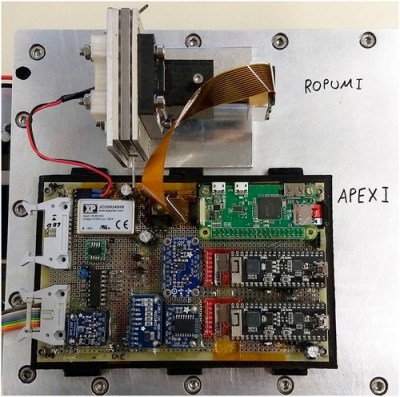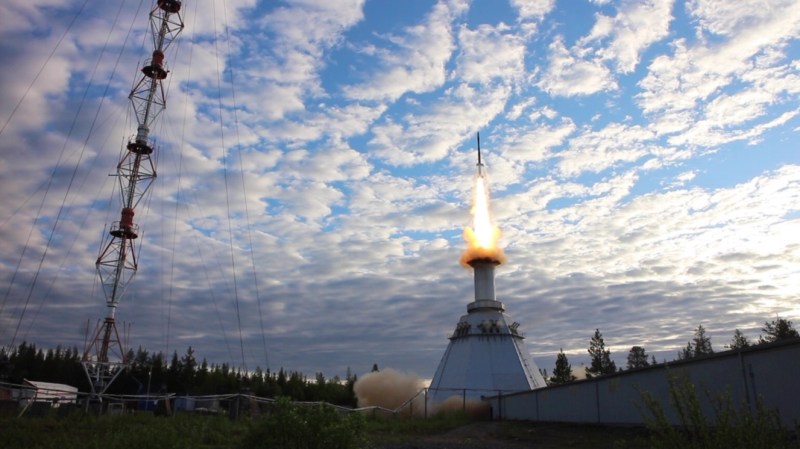Just two weeks ago, the crew from the International Space Station released a photo of their nine crew members – an odd number considering that the facility only has space to house six astronauts at a time. In fact, the crew had just gathered for a celebratory dinner before three of the astronauts were to return home. The new astronauts joining including Hazza Al Mansouri, the first astronaut from the United Arab Emirates (who has since returned from his mission), as well as astronaut Jessica Meir and cosmonaut Oleg Skripochka.
Amidst the excitement over the upcoming 10 (!) spacewalks in the next three months, there’s also been some cool developments in the open source space, with one of the first ESP32s launched into space.
[Nico Maas] from the Microgravity User Support Center (MUSC) at DLR (German Aerospace Center) worked on an experiment launched by MORABA (Mobile Rocket Base) at DLR. The launch site was at the Esrange Space Center in Kiruna, Sweden, with the mission launching on June 13, 2019 at 4:21 am local time.
The experiment – APEX (Advanced Processors, Encryption, and Security Experiment) was onboard the ATEK / MAPHEUS-8, mission, rising to an altitude of 240km into space and returning back to earth after six minutes of microgravity.

The main board included two ESP32s and a Raspberry Pi Zero W, running resinOS / balenaOS, an operating system designed to run parallel Docker containers and optimized for IoT fleet management.
Prior to the experiment, the standard for on-board computers for use in CubeSats was the ATmega/Arduino-based ARDUSAT. Since it was first made available for use in CubeSats in 2013, the performance has become limited, with improvements needed to perform higher throughput data sampling or operations requiring more computational power.
It’s also cool to note that the system, built using a 3D-printed holder, survived the re-entry (reaching up to 20.6g) with hardly a scratch.

















I wonder why something like a Teensy or an ST chip didn’t get any love.
My thoughts also, an ARM Cortex M3 or M4 would be perfect for the job.
Maybe using CAN bus with multiple M0’s each processing a range of sensor and reporting to the
*reporting to the M3/M4.
It’s sad that apparently without any research author claim that „Prior to the experiment, the standard for on-board computers for use in CubeSats was the ATmega/Arduino-based ARDUSAT” ATmega has nice radiation tolerance but other microcontroller families are also widely used. I’ve heard of CubeSats with MSP430 or couple different Coretex-M3 chips. Even beaglebone was adopted for CubeSat. NASA made a Cubesat processor with Zynq SoC (CHREC Space Processor) which greatly outperforms ESP32.
Arduinos and raspberries are cool but not as widely used in industry as you might think.
It’s sad that apparently without any research author claim that „Prior to the experiment, the standard for on-board computers for use in CubeSats was the ATmega/Arduino-based ARDUSAT” ATmega has nice radiation tolerance but other microcontroller families are also widely used. I’ve heard of CubeSats with MSP430 or couple different Coretex-M3 chips. Even beaglebone was adopted for CubeSat. NASA made a Cubesat processor with Zynq SoC (CHREC Space Processor) which greatly outperforms ESP32.
Arduinos and raspberries are cool but not as widely used in industry as you might think.
This is Hackaday. All microcontrollers are AVRs, all single-board computers are Raspberry Pis. Forget all the cubesats running PICs, MSP430s, STM32s, SAMs, OMAPs, Atoms, and Zynqs.
Well said, that is the main thing about HaD that annoys me. If it’s not Arduino or RPi, you may never hear about it on HaD, but if you do, the article will start with something like “although we think an Arduino would have been a better choice…”
The author used a 555 timer to control the beeper, but an arduino would have been a better choice.
I think that is just part of the circle jerk
nah, 555 also gets some spotlights…
Nico ist halt ein geiler Typ
Does encryption work differently in space ? ;)
Only a person with little knowledge would put a Raspberry Pi Zero W in something like this. No way would I trust the uSD card to stay in its socket.
My thoughts exactly.
Then there’s the BGA / PoP arrangement for the processor & flash… I’m amazed that survived, but I don’t know what the launch G’s were…They do mention putting epoxy fillets to support the on-board components, but that is more module-level – there is nothing around any of the board-level components.
They touch on using “rad resistant” Samsung Evo uSD cards (apparently used on ISS!), but what of the big flash die sitting on top of the Pi?
I breezed through, but couldn’t see mention of any shielding…
Looking at the picture it appears that there is a tab coming up from the perfboard that would lock the SD card in place, once I read the article and realized that they had turned off all wireless by default I wondered why they didnt use a plain Pi zero instead.
Huh, no mention of the at least 4 Adafruit boards that can be seen in the picture. Yeah they are more artsy oriented in my opinion and a bit in the higher price range but they do contribute alot to the community not to have gotten a shout out.
thanks, just looked up what was being used, appears to be: Adafruit LSM9DS1 9-DOF, DS3231 RTC, ADS1015 ADC 4 channel amp, and a BME280 Temp/Humidity/Pressure sensor
Surely the acronym for Advanced Processors, Encryption, and Security Experiment should have been APESEX? :)
What no CDP1802? That’s been in space in various forms since before the Internet was even available to us.
The main thing I’m going to take from this – that circuit that got launched into space was on a bit of perfboard.
The next time I get distracted by perfectly etched, masked and silk screened PCBs, I’m going to try and remember to focus on what’s good enough for the space station – making it work with the minimum of fuss.
Nothing shown here (aside from the SD card) is in any way good enough for the space station ;)